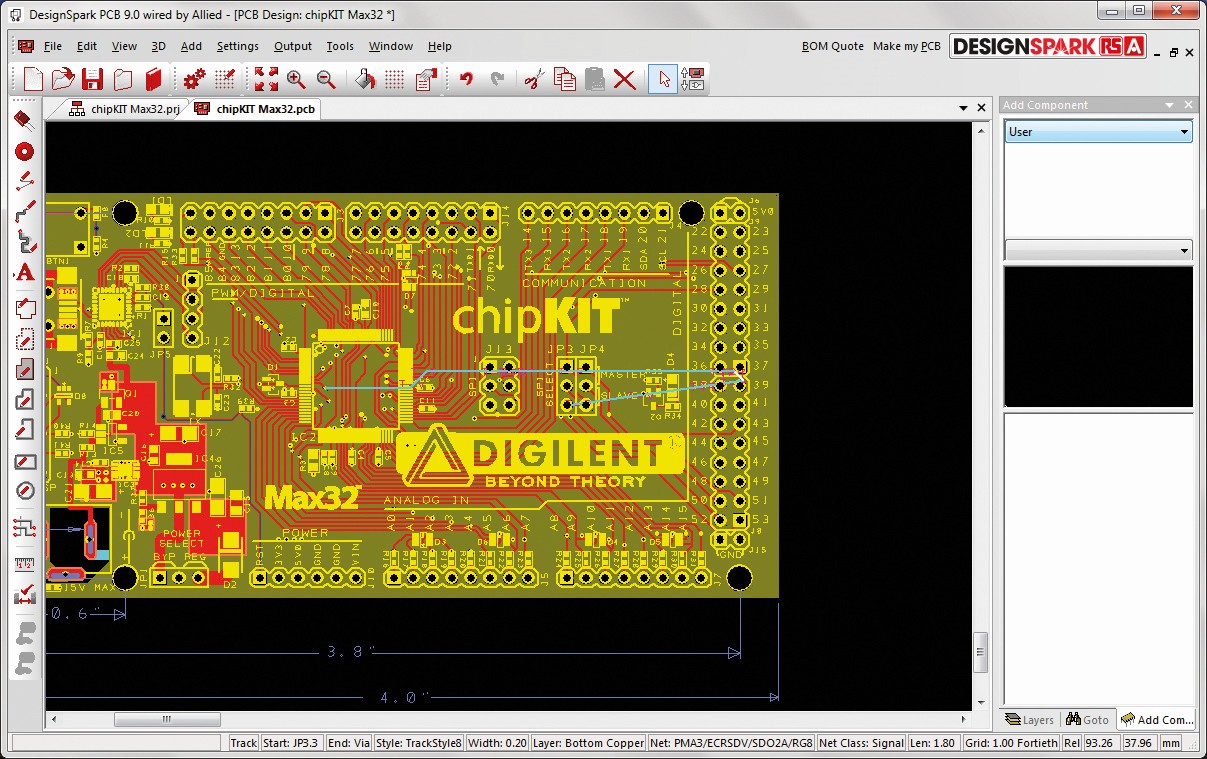With the integration of the SnapEDA component library into DesignSpark, RS Components has once again proven that users of the free or very low-priced versions of the PCB CAD tool can rely on RS Components in the long term. 2020 marked the 10th anniversary of DesignSpark since its launch.
The British company RS Components, known as RS, is a global distributor of components, equipment and materials for electronics, electromechanics and automation. It is based in Corby. The Electrocomponents Group generated sales of £1.953 billion in 2020 with 7000 employees worldwide. In addition to RS Components, the Electrocomponents plc Group includes the brands Allied Electronics & Automation, RS PRO, OKdo, DesignSpark, IESA, Synovos, Needlers and Liscombe. With DesignSpark, RS has been providing prototyping software tools for the electrical and mechanical design of printed circuit board assemblies since 2010, which are also widely used in Germany.
Up-to-date and powerful despite being 'free'
It is interesting to note that the free DesignSpark is supported by engineers from all over the world and has a broad user base. This ranges from students and start-ups with limited resources to large companies [1]. However, not everything is free for DesignSpark members. A few years ago, the company added paid-for upgrade packages to the free software, which can also be subscribed to. The free CAD tool DesignSpark PCB (version 10.0) and the paid DesignSpark PCB Pro (version 10.0) are currently available.
The differences in performance between the two tools are shown in [2]. However, the price of around €423 + VAT for the paid version is still affordable even for the smallest companies. Both versions have a 3D view for PCB design.
Access to extensive online library with approved models
The free version provides a basic autorouter, while the Pro version offers extended routing modes. The high release figures (almost annually, currently V 10.0) clearly demonstrate that RS attaches great importance to the prompt updating of its tools, as RS ultimately aims to ensure that DesignSpark users also purchase the required components from the distributor. So it's all about customer loyalty. On the other hand, the company wants to keep pace with the rapid development of electronics and thus also the component base. For example, on July 23, 2021, the company announced that the PCB CAD upgrade V 10.0 is now available for Windows 10 users. The tool is optimally designed to run on any standard PC hardware with Microsoft Windows(Fig. 1).
As with the well-known and market-dominating EDA companies such as Mentor Graphics, Cadence and Altium, RS aims to provide design-to-manufacturing support with its tools:
- Shorten design cycle times
- Enable rapid prototyping
- Bring changes to market quickly.
DesignSpark Mechanical is CAD software that can be used to create technical drawings including support annotations. The freeware also offers a library full of 3D models and supports common CAD file formats such as STL, SKP, OBJ and AutoCAD DXF.
In competition with other free tools
While DesignSpark PCB is often referred to as 'The World's Most Powerful Free Schematic and PCB Layout', there are actually more than 25 alternatives to DesignSpark PCB for a variety of platforms, including Windows, Linux, Mac, online/web-based and Android. One serious alternative is KiCad, which is both free and open source. Other competitors to DesignSpark PCB include Fritzing (Paid, Open Source), QUCS (Free, Open Source), LibrePCB (Free, Open Source) and Autodesk EAGLE (Free Personal). This is reason enough for RS to continuously advance its CAD tools.
SnapEDA component library for DesignSpark
On June 25, 2021, the distributor announced another major step towards increasing the performance of DesignSpark. It was announced that RS has integrated SnapEDA's electronic component library and search engine into its PCB CAD platform (Fig. 2). The new search function gives engineers easy access to free CAD models of millions of electronic components, significantly reducing design time. It offers essential building blocks for electronic design, including schematic symbols, PCB footprints and 3D models created with proprietary creation, verification and translation technology. As the industry's only vendor-independent search engine, it helps an estimated 750,000 professional engineers or more annually to select components from a comprehensive component library and incorporate them into their designs.
SnapEDA can also be used with other CAD tools
The SnapEDA online component library in DesignSpark can be searched by entering either a known part number or one or more keywords. CAD models are downloaded for free and can be imported directly into DesignSpark or virtually any other major PCB CAD tool. Data sheets, full specifications, price checks and component sales are available through RS.
"Since the launch of DesignSpark 11 years ago, RS Components has demonstrated its commitment to supporting the engineering community through free tools and resources," said Natasha Baker, founder and CEO of SnapEDA. "That commitment is reflected in our integration of SnapEDA here."
"Part selection and design-in can be major bottlenecks in the electronic design process as engineers must source digital models for each component," said Carol North, Senior Digital Development Manager, RS Components. "Our new partnership with SnapEDA solves this problem by adding free drop-in CAD models to our free DesignSpark platform."
In addition to DesignSpark, supported CAD formats include Altium, KiCad, Fusion360, Cadence Allegro, OrCAD, Eagle, Pulsonix, DipTrace, Proteus, ExpressPCB Plus, CircuitStudio, PADS, PCB123, Target 3001! and P-CAD.
References:
[1] www.rs-online.com/designspark/
[2] www.rs-online.com/designspark/pcb-software-comparison
[3] https://alternativeto.net/software/designspark-pcb/



